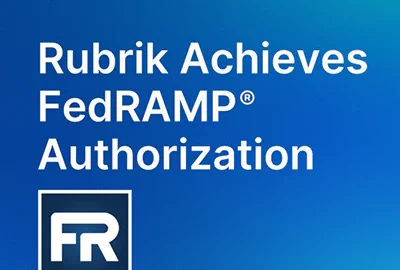Insight by Qlik
Industry Exchange Cloud 2024: Qlik’s Brendan Grady on latest data integration, analytics capabilities
As generative artificial intelligence takes hold, here's how data fabric can provide the ideal AI foundation, the Qlik analytics leader explains.
Generative artificial intelligence is here to stay, even for once-skeptical federal agencies.
Much of the skepticism stems from the fact that genAI uses unstructured data, unlike traditional AI and analytics applications, said Brendan Grady, general manager of the Analytics Business Unit at Qlik. Without proper data management, it’s hard to trust what a generative program will in fact generate, he shared during Federal News Network’s Industry Exchange Cloud 2024.
“Some people would refer to it as the Wild West,” Grady said, adding that with unstructured data, “you don’t know what the sources are in a lot of cases. So having that explainability is going to be really, really critical.”
Having trust in the information going into a genAI program is foundational to ensuring trustworthiness of the output. “Having trust in the information you’re delivering is going to be key to supporting your mission,” Grady said.
After all, he noted, a genAI algorithm will produce an answer regardless of what data it draws from. Therefore, trustable results start with the information a program’s large language model (LLM) draws from.
Grady pointed to a couple of examples:
- Citizens seeking accurate information on policies for, say, Social Security or Medicare benefits
- Federal employees trying to get accurate information about often-complicated personnel rules and policies
Explainability would be a key challenge in both cases, Grady said. In essence, can the results also provide details about the data sources and why the LLMs provided the outcomes that they did?
“When you ask a question of a generative AI application, you need to be able to have confidence of where the information came from,” he said.
Grady added that a functionality called Qlik Answers in its AI tools “will not only tell you the document where [the output] came from, it will point you to the actual sentences and words.”
How data fabric provides AI foundation
Grady said the essential elements of a trustworthy data system include data fabric that encompasses the information needed to train and deploy genAI. Think of the fabric as a foundation supporting AI initiatives, he said.
A Qlik survey found that only 20% of organizations report having an AI data fabric. Yet a unified data foundation, Grady said, is especially important in the AI context because of the need to include available structured and unstructured data to an agency’s generative application.
“You need to treat your structured and unstructured data as first-class citizens,” he said. That doesn’t necessarily entail creating data warehouses or data lakes — storing everything in a single, physical location. In fact, “more and more organizations realize they are going to have a federated data challenge.”
That’s why a data fabric approach make sense, he said. Increasingly, organizations “are turning to data fabric, where they’re putting technology on top of data where they have it,” Grady said. That technology — the data fabric — will “extract it, move it, transform it and make it available in ways that organizations can just access it where the data resides.”
To create a data fabric, Grady advised agencies to start with a data inventory.
- “The first thing to make sure you have is a data catalog that’s been augmented with AI sitting on top of all of your data sources.”
- Next comes a metadata layer, known as a knowledge graph, “that can give you more information [about the] linkages among that data.”
- A third element is an engine “that will recommend data sources based on what you’re trying to do.”
Success in generative AI also requires the right management approach, Grady said. For one thing, White House executive orders have established a policy for safe and ethical use of AI. For another, an agency’s data has real value.
“More and more organizations are looking at their data as a product, something that needs to be nurtured, managed and curated,” he said. Therefore, curation and management of data is not the sole purview of data officers.
“The mission owners — these are your subject matter experts for the areas that they’re supporting,” Grady said. “Mission owners really need to take some responsibility and accountability for driving what that data is doing.”
Discover more articles and videos now on Federal News Network’s Industry Exchange Cloud 2024 event page.
Copyright © 2025 Federal News Network. All rights reserved. This website is not intended for users located within the European Economic Area.
Tom Temin is host of the Federal Drive and has been providing insight on federal technology and management issues for more than 30 years.
Follow @tteminWFED






